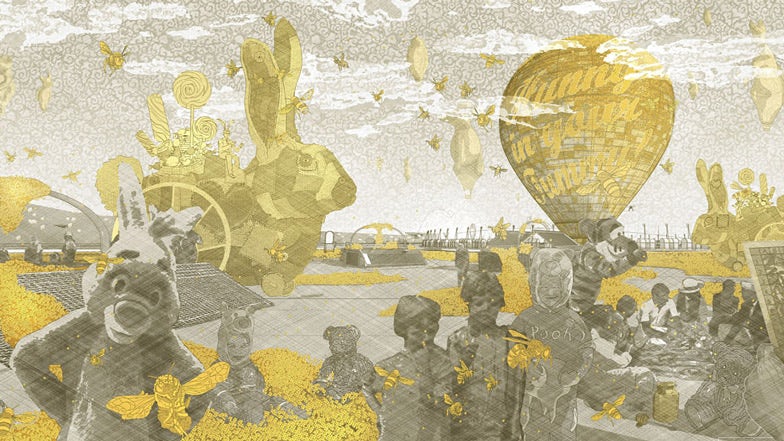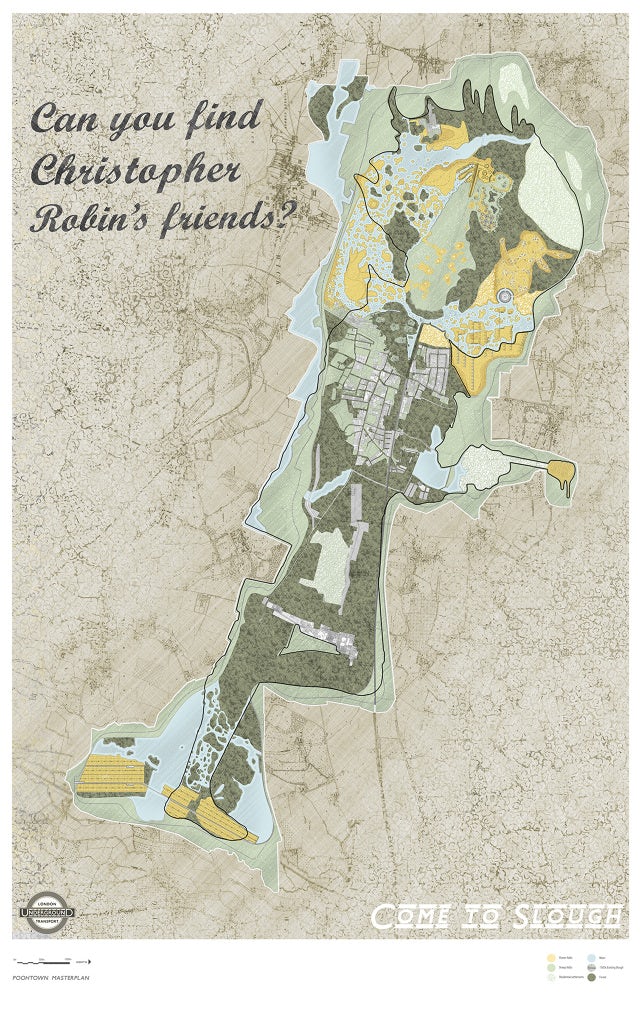“Architecture may not necessarily cure personal unhappiness,” English architect Nick Elias tells Architizer via email, “but it may provide the framework for it.”
This is the guiding premise of PoohTown, Elias’s RIBA President’s Silver Medal-winning conceptual overhaul of Slough, a middling English town where industry rules — the likes of O2, Mars, Blackberry, Sara Lee, and Ferrari are headquartered there — and quality of life ratings are low (so low that Ricky Gervais chose it as the perfectly drab setting for “The Office”). For his dissertation at the Bartlett School of Architecture, Elias re-envisions a place described by English media as “a concrete wasteland” and a “byword for blandness and mediocrity” with a thought experiment: What if, in the 1920s, it had been built on an industry of happiness… based on none other than our beloved Winnie the Pooh?

Elias’s speculative urban design project and supporting thesis, “Quantifying PoohTown,” is based on research that suggests that what makes people happy is “playing an idealized, fictional, representation of themselves — from putting make-up on to proving their organic credentials at the farmers’ market.” PoohTown exists as a series of renderings, fictional vintage black-and-white scenes brightened by honey-yellow, very purposeful Pooh-themed architecture, as seen from a hot-air balloon tour.

Familiar characters are repurposed into civic works. “Research shows [that] reading fictional books make us happy as we entertain our imagination and massage our potential (eg. wanting to be superhero), and Owl is an advocate of reading and education in the story,” Elias explains. “’Owl’s Library’ represents this happiness in a designed forest with various ‘Ministrees’ (sic) as sections of the library.” At the end, guests visit a virtual emporium of happy products to underscore the commercial potential of happiness.
Elias’s response to his own research — the creation of an entire fictional urban scheme — took cues not from the works of architects but English political artists like Grayson Perry and William Morris, whom he describes “architects in their own right by exploring the ‘way of living’.”


“If architects only look to architects for inspiration then the discourse may forever remain closed,” he says. And Winnie the Pooh has a thing or two to teach us, too.
“For me, Winnie the Pooh explored serious moral and political teachings,” says Elias. The character also originates from the 1920s, the same time as Slough’s industrial sprawl. For all the happiness PoohTown seeks to provide, the bittersweet underlying truth is that for the depressive, lonely Christopher Robin, Pooh was a make-believe form of escape. But it gets the point across. “PoohTown argues if we were to start designing for our emotional, mental state,” says Elias, “then we may ask less of the physical world though a resolved sense of belonging.”

via Nick Elias








